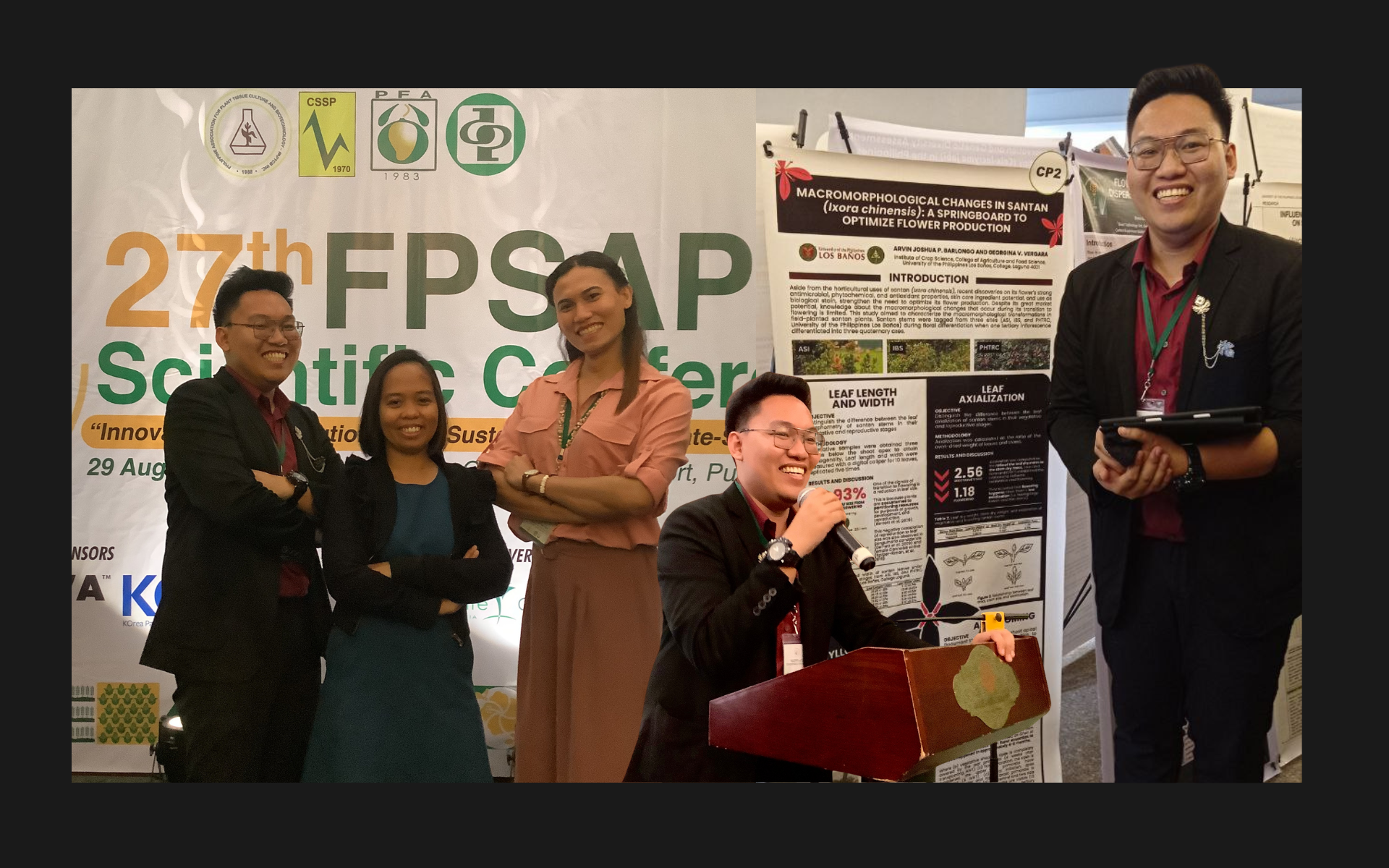Macromorphological Changes in Santan: A Springboard to Optimize Flower Production
Poster Presentation. 27th Federation of Plant Science Associations of the Philippines (FPSAP) Scientific Conference. Puerto Princesa, Palawan. August 28-September 1, 2023

Abstract
Aside from the horticultural uses of santan (Ixora chinensis), recent discoveries on its flower’s strong antimicrobial, phytochemical, and antioxidant properties, skin care ingredient potential, and use as biological stain, strengthen the need to optimize its flower production. Despite its great market potential, knowledge about the macromorphological changes that occur during its transition to flowering is limited. This study aimed to characterize the macromorphological transformations in field-planted santan plants. Santan stems were tagged from three sites (ASI, IBS, and PHTRC, University of the Philippines Los Baños) during floral differentiation when one tertiary inflorescence differentiated into three quaternary axes. Vegetative samples were obtained three inches below the shoot apex to attain homogeneity. Leaf length and width were measured with a digital caliper for 10 leaves, replicated five times. Axialization was calculated as the ratio of the oven-dried weight of leaves and stems. Phyllotaxy was visually characterized in 15 stems each for vegetative and flowering santan. Visual changes on the shoot apical meristem of santan from vegetative to flowering stages were also observed using Bel Engineering Stereo Microscope. Results revealed significant macromorphological changes during the transition to flowering in santan. These changes included a significant reduction in leaf size (26.93%), a decrease from 2.56 axialization ratio in vegetative stems to 1.18 in flowering stems, a shift to a more complex phyllotaxy (<180°), and the doming and differentiation of the shoot apical meristem. By establishing the macromorphological changes in santan, this research provides a foundation for further investigations on the environmental cues, such as photoperiod, temperature, and light quality influencing these transformations, santan flowering efficiency and synchronization, and identifying the genetic basis underlying these morphological changes. This knowledge would be useful to further enhance flower production in response to the increasing demand as a result of the recent santan utilization discoveries.
Keywords: Macromorphological changes, reproductive phase, shoot apex, transition to flowering, vegetative phase
Post a comment